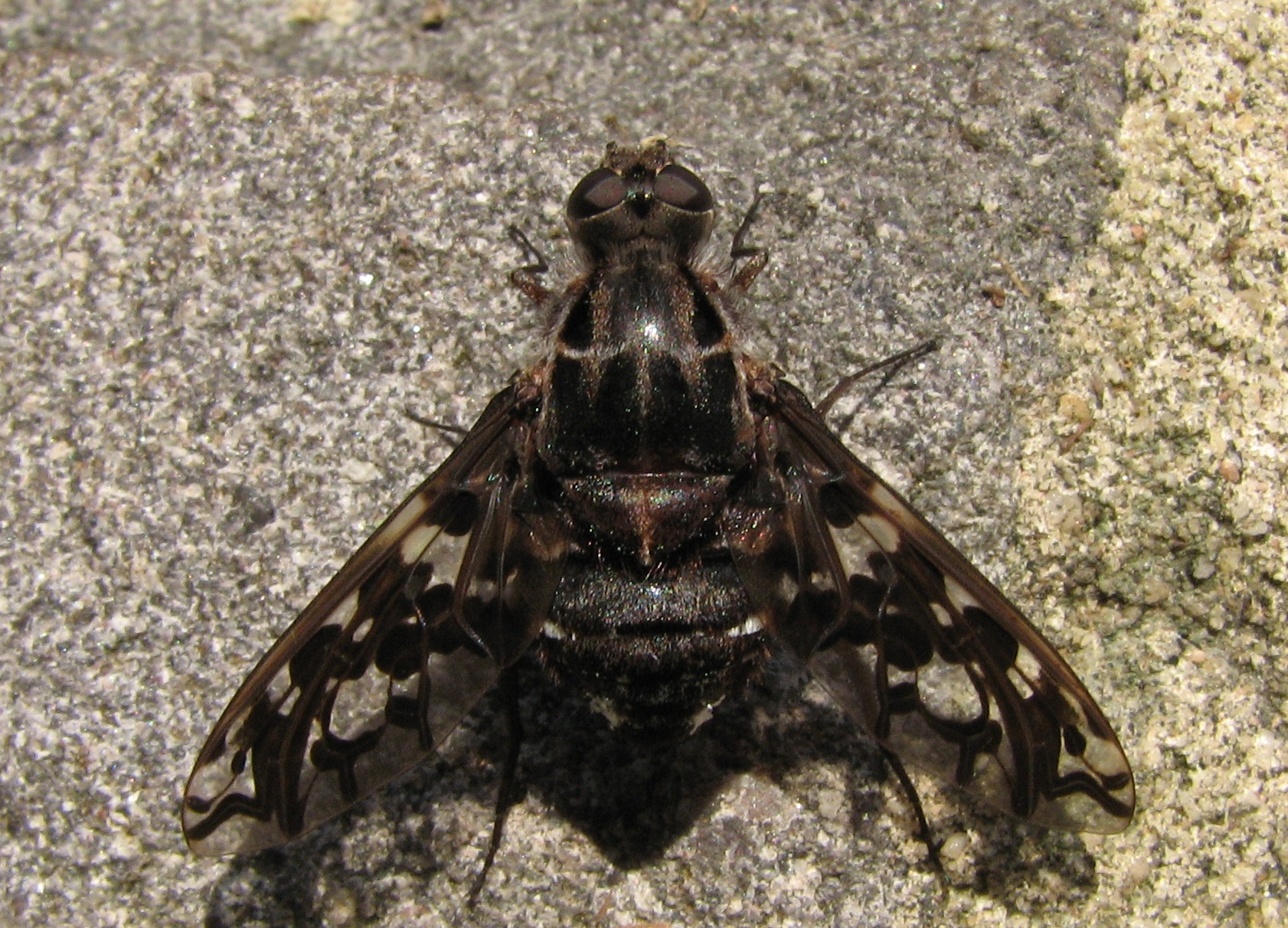Xenox Nigrita on:
[Wikipedia]
[Google]
[Amazon]
''Xenox'' is a genus of bee flies (insects in the family 
Bombyliidae
The Bombyliidae are a family of flies, commonly known as bee flies. Adults generally feed on nectar and pollen, some being important pollinators. Larvae are mostly parasitoids of other insects.
Overview
The Bombyliidae are a large family of fl ...
). There are five described species in ''Xenox'', all of which parasitize bees in the genus ''Xylocopa
Carpenter bees are species in the genus ''Xylocopa'' of the subfamily Xylocopinae. The genus includes some 500 bees in 31 subgenera. The common name "carpenter bee" derives from their nesting behavior; nearly all species burrow into hard plant ma ...
'' as larvae.

Species
* ''Xenox delila
''Xenox delila'' is a species of bee flies (insects in the family Bombyliidae
The Bombyliidae are a family of flies, commonly known as bee flies. Adults generally feed on nectar and pollen, some being important pollinators. Larvae are mostly pa ...
'' (Loew, 1869)
* ''Xenox habrosus
''Xenox habrosus'' is a species of bee fly (insects in the family Bombyliidae
The Bombyliidae are a family of flies, commonly known as bee flies. Adults generally feed on nectar and pollen, some being important pollinators. Larvae are mostly p ...
'' (Marston, 1970)
* ''Xenox nigrita
''Xenox'' is a genus of bee flies (insects in the family Bombyliidae). There are five described species in ''Xenox'', all of which parasitize bees in the genus ''Xylocopa'' as larvae.
Species
* ''Xenox delila'' (Loew, 1869)
* ''Xenox habrosus'' ...
'' (Fabricius, 1775)
* ''Xenox tigrinus
The tiger bee fly, ''Xenox tigrinus'', is an insect of the family Bombyliidae (bee flies) found in the eastern United States and southern Ontario. It formerly went by the name ''Anthrax tigrinus''. The distinctive wing pattern may resemble tiger s ...
'' (De Geer, 1776) (tiger bee fly)
* ''Xenox xylocopae
''Xenox xylocopae'' is a species of bee flies (insects in the family Bombyliidae
The Bombyliidae are a family of flies, commonly known as bee flies. Adults generally feed on nectar and pollen, some being important pollinators. Larvae are mostly ...
'' (Marston, 1970)
References
Further reading
*External links
* Bombyliidae genera Articles created by Qbugbot {{Bombyliidae-stub